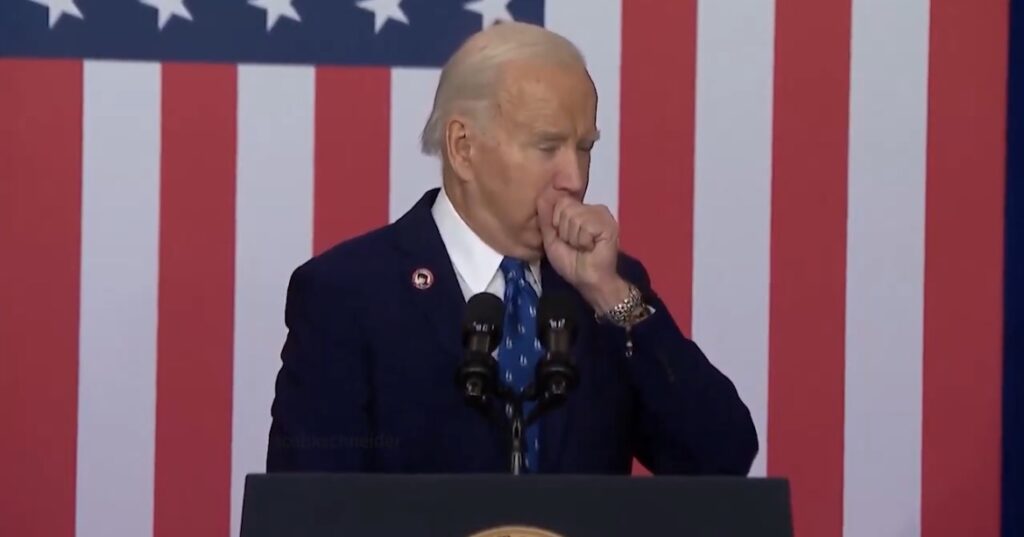On a recent Monday morning, President Joe Biden spoke at an event hosted by the Department of Labor, commemorating America’s labor history. Although the subject matter was significant, Biden’s delivery was marred by what appeared to be health issues, as he repeatedly struggled through his speech, even coughing into the microphone. Biden emphasized the character and importance of the Department of Labor, expressing his honor at being joined by valued leaders. He made an assertion about transforming the economy by dismantling what he termed the failed economic principle of trickle-down economics. He appealed to personal anecdotes, referencing his father’s belief that benefits do not simply trickle down from the wealthy to society, indicating a need for more equitable economic policies.
However, Biden’s speech included questionable claims regarding job creation. He boasted of having “created” 16 million jobs, a number that critics would argue is misleading. This figure conflates a natural return to work as pandemic restrictions lift with actual new job creation, thereby distorting the narrative around his administration’s economic achievements. Moreover, Biden highlighted the success of manufacturing and construction jobs, which he described as well-paying positions that do not necessitate a four-year degree, aiming to frame his administration’s policies as beneficial for a broad demographic of workers. However, the reception of these claims was mixed, as many observers pointed out the flaws in his reasoning and the context surrounding those jobs.
The contrast in Biden’s presentation and health was evident, drawing widespread attention, especially when juxtaposed with the activities of his predecessor. While Biden struggled with his speech, former President Donald Trump announced a substantial investment deal projected to create over 100,000 new jobs, a move that positioned him as a competent statesman actively engaging in economic development. The difference in their public engagements highlighted the contrasting styles of leadership and communication, where Biden’s fumbling with his teleprompter drew criticism, while Trump’s confident negotiation with business leaders generated optimism and excitement among his supporters.
Furthermore, Biden’s health situation, described as a persistent ‘cold’ since it had been noted for several months, raised concerns about his ability to fulfill presidential duties effectively. Skepticism regarding who is truly guiding the nation was further fueled by Biden’s health issues, as many questioned if he had the capacity to lead amidst the visible struggles. Social media reactions emphasized doubts about his fitness for office, stirring discussion about the implications if an ailing president cannot adequately perform his role.
In contrast, Trump’s clear and energetic public outings reinforced his image as a dynamic leader, capable of securing significant financial commitments from corporations. His behind-the-scenes negotiations exemplified his self-styled deal-making prowess, something he often touted during his presidency. The visual and communicative differences between Biden and Trump starkly illustrated contrasting leadership effectiveness, with Trump appearing as an assertive figure engaging in direct discussions about job creation and investment, thus enhancing his public persona as a viable alternative for the presidency.
The exchange of narratives between Biden and Trump continues to define the current political landscape, particularly in the context of economic recovery and job creation. As Biden battles health-related challenges and attempts to assert his administration’s achievements, the contrasting vigor and clarity displayed by Trump serve as a powerful reminder of the diverse approaches to leadership in American politics. This dichotomy among presidential communications not only informs voter opinions but also impacts national discourse surrounding the future direction of economic policies, labor rights, and overall government effectiveness moving forward.

